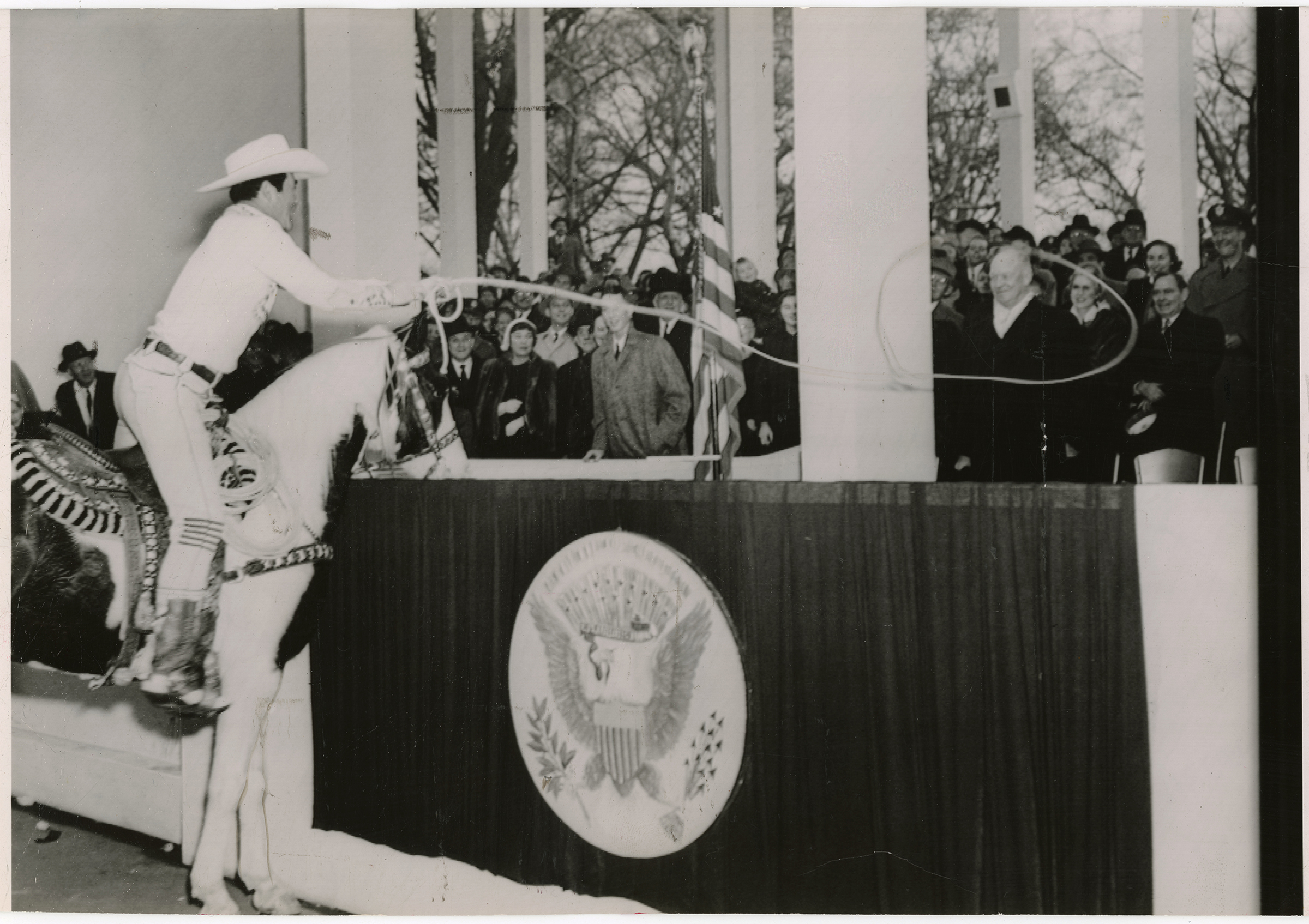From Big Muddy to ‘Big Time’
Not every child that slid down a snow-covered hill in Saskatchewan’s Big Muddy Valley eventually had their photo on the front page of every major newspaper in the free world. Owen Harlan Mickel did.
Owen was the fifth child of Edgar and Mary Mickel. His parents had a whipcracking act they performed at the rodeos, fairs and gatherings they frequented. His dad was an itinerant horseback preacher who made the rounds to churches in northeastern Montana and southern Saskatchewan. Owen was a newborn infant in 1910 when his family took a homestead near a spring in the Big Muddy country north of the Medicine Line. Five years later, the Mickels traded their homestead to a neighbour for a team of horses and a Model T truck, then moved to Wolf Point, Montana. That’s where young Owen saw a trick roper in action, and the seed was planted. In his words, “A rope was in my hand all the time; at home, at school, everywhere. I roped everything that moved, chickens, dogs, cats and kids.”
Owen’s first paid performance as a trick roper came at the 1925 Miles City Rodeo when he made $15, at a time when farmworkers averaged $38 a month. The announcer forgot the 15-year-old’s name and adlibbed, “Here’s Montie from Montana, The Montana Kid.” That appealed to the youngster, so he claimed Montie Montana as his professional name.
In 1927, 17-year-old Montie made his first of a dozen appearances at the rodeo in Ellensburg, Washington. His parents performed their bullwhip act, and his father preached a sermon at the Methodist Church that year.
Montie began his film career as a rider, roper, stunt double and actor in 1929 and was involved in over 50 motion pictures. He worked with Shirley Temple, Roy Rogers, Gene Autry, Ronald Reagan, Jimmy Stewart, Jay Silverheels, Tom Mix, Clark Gable, Bob Hope, Frank Sinatra and Judy Garland. He entertained thousands of spectators along the route as he spun rope while riding in his first Rose Bowl Parade in 1933. Over the years, he entertained in Europe, Australia and worked every major rodeo in North America multiple times. His signature move was to rope a group of (usually 4 or 5) moving riders. His record catch was 11 riders; he used more than 30 meters (100 feet) of rope for that feat.
He always rode a pinto, and they were all named Rex. One time, to promote an event in New York City, he and Rex took an elevator to perform on the 86th-floor observation deck of the Empire State Building, which was the world’s tallest structure at the time.

That front-page newspaper photo I mentioned earlier was taken in 1953 at Washington D.C. during Dwight D. Eisenhower’s inaugural parade. On impulse, Montie rode up to the viewing stand and asked the newly-elected President if he could rope him. Eisenhower consented, and Montie got so nervous his first loop failed but his second one settled elbow-high around the President as the cameras clicked. Secret Service agents were not amused. They told Montie that if they hadn’t heard the President giving him permission, “you would have been a sieve.” (Riddled with bullet holes). In today’s lingo, photos of that impromptu stunt ‘went viral.’
Montie was a guest celebrity at the 1975 unveiling of a North West Mounted Police cairn where the Big Muddy Detachment (1902–1926) once was. After the dedication, he was taken to his parents’ abandoned homestead. That stirred memories of him and his siblings sledding down the hills. He visited the site again in 1989 and talked about his dad building a dam to hold water at their spring and digging coal from a hillside. Where the shop had been someone, found some ploughshares. (Replaceable cutting edge of a breaking plough.) Montie autographed one for display at the Nature Center in thenearby hamlet of Big Beaver, Sask.
Montie was inducted into the Rodeo Hall of Fame at the National Cowboy and Western Heritage Museum in 1989. The Pendleton Round-Up and Happy Canyon Hall of Fame in 1990 and the ProRodeo Hall of Fame in 1994. In 1997 he was the Grand Marshall of the 75th Anniversary Ellensburg Rodeo Parade and inducted in their Hall of Fame.
In 1993 he rode in his 60th and final Rose Bowl Parade and released his 349- page autobiography Not Without My Horse. He said his son Montie Jr., “Computed this thing and acted like it was easy.”
Montie Montana passed away in 1998 at Chatsworth, California, where he is buried. A horse-drawn wagon delivered his rose-draped coffin; his daughter Linda sang “Pony Boy”, and the Riders of the Purple Sage harmonized “Happy Trails.”
He was inducted posthumously into the Cheyenne Frontier Days Hall of Fame in 2011 and the Montana Cowboy Hall of Fame & Western Heritage in 2015.















